Ever wondered what the future of shopping looks like?
The revolutionisation of the market will be under the hands of consumers.
Consumer behavior will dramatically change over the next five years, transforming the online and retail industry.
With the consumer landscape shifting towards experiences over possessions, you will find a redefined shopping experience focused on sustainability, engaging brands, personalization, and eco-friendly choices.
Read along to learn the top consumer trends in the next five years, which will change the way businesses react to consumers.
Build trust & FOMO
Highlight real-time activities like reviews, sales & sign-ups.
Top Consumer Behaviour Trends
Increase in mobile commerce, with market size reaching USD 1.99 trillion by 2029 through online shopping.
By 2025, influencer marketing will have a growth rate of 25% more than it was 6 years ago.
Almost half of US GenZ customers look up a product online while purchasing in an offline store.
86% of millennials overspend during the holiday season
Email has managed to attract 64% of GenX consumers, driving them to purchase
Baby Boomers are the dominant purchasers of bird food.
The share of the online restaurant delivery sector rose from 9% to 13% due to the COVID-19 Pandemic.
Consumer Behavior Trends in Online Shopping
Some of the top consumer behavior trends in online shopping are:
Rise of online shopping through mobile apps
Businesses need to adapt to the latest consumer behavior trends to stay relevant in a rapidly changing marketplace.
The mobile commerce market size is expected to reach USD 1.99 trillion by 2029, growing at a rate of CAGR of 6.54% from 2025 to 2029.
As smartphones become more advanced, consumers are readily shifting to mobiles for their shopping needs.
In the next five years, online shopping through mobile apps will definitely see a rise.
1. By 2026, North America alone is expected to reach 281 billion transactions through online payment methods.
This implies that consumers are open to flexible payment methods, and in the future, online payment methods will increase and be widely used by shoppers.
Consumers are more likely to shop in businesses that know their preferences and understand their needs.
2. Therefore, 45.9% of businesses agree that in the next five years, their top priority will be customer experience.
3. 95% of consumers have said that delivery options are very important while making purchases.
In the next five years, on-demand delivery options will be provided for faster and better services.
Consumer Behavior Trends in Marketing
5. Influencer marketing will keep exceeding at an annual rate of 25%
The global influencer marketing platform market was valued at USD 4.6 billion in 2018 and has been expected to grow at an annual rate exceeding 25% from 2019 to 2025.
In the next few years, using influencers for promotions will be seen often as part of the consumer trends due to their huge platform.
Consumers are more likely to buy after listening to the recommendations of their favourite celebrities.
6. 66% of online shoppers report that they are worried about their personal data being used by companies for the wrong reasons.
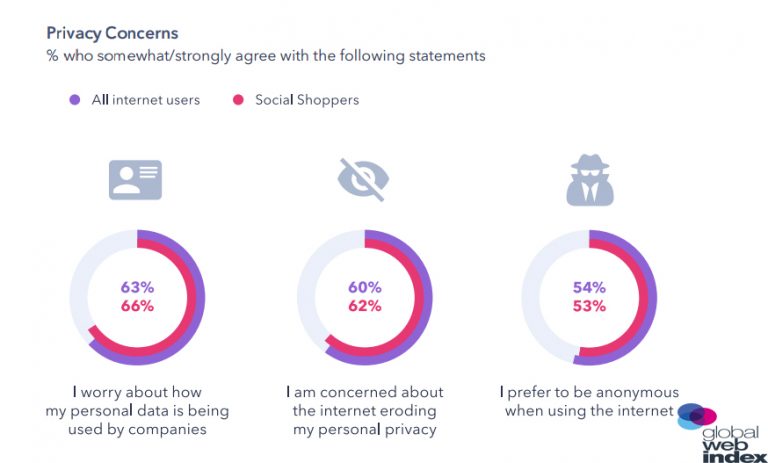
Customers are expecting companies to provide better security procedures which will be implemented in the next few years by investing in stronger cybersecurity defenses.
7. 78% of consumers consider a sustainable lifestyle as a priority, which also includes product packaging.

More and more businesses have included eco-friendly packaging and sustainable products, and within the next few years, all their products will also be completely organic.
8. Social commerce is projected to experience a growth of USD 6.2 trillion by the year 2023.
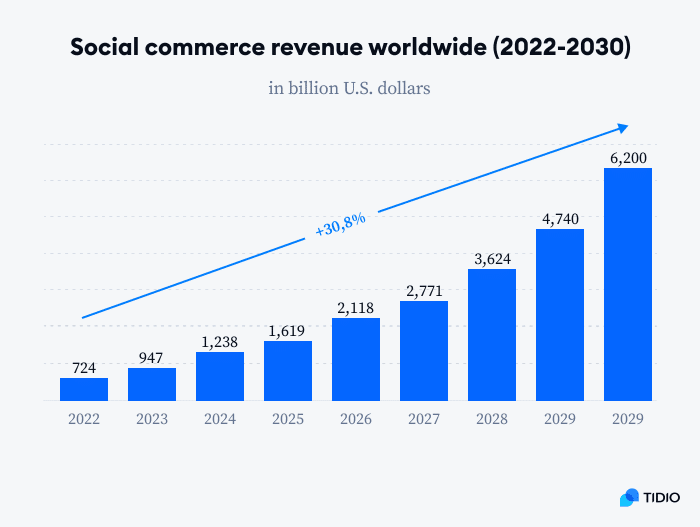
With so many people using social media channels, businesses will provide ads and other such engaging methods on online platforms in the next few years, increasing social media shopping.
Build trust & FOMO
Highlight real-time activities like reviews, sales & sign-ups.
Consumer Behavior Trends in Retail
9. More subscription services have entered the market than ever before, leading to a year-over-year increase in subscribers of over 90%, which will keep growing over the years.
Consumers invest a lot in entertainment and want streaming services with multiple subscription options.
Businesses will soon provide subscription options suitable for all individuals.
10. The US pet market size currently is worth over $2 billion.
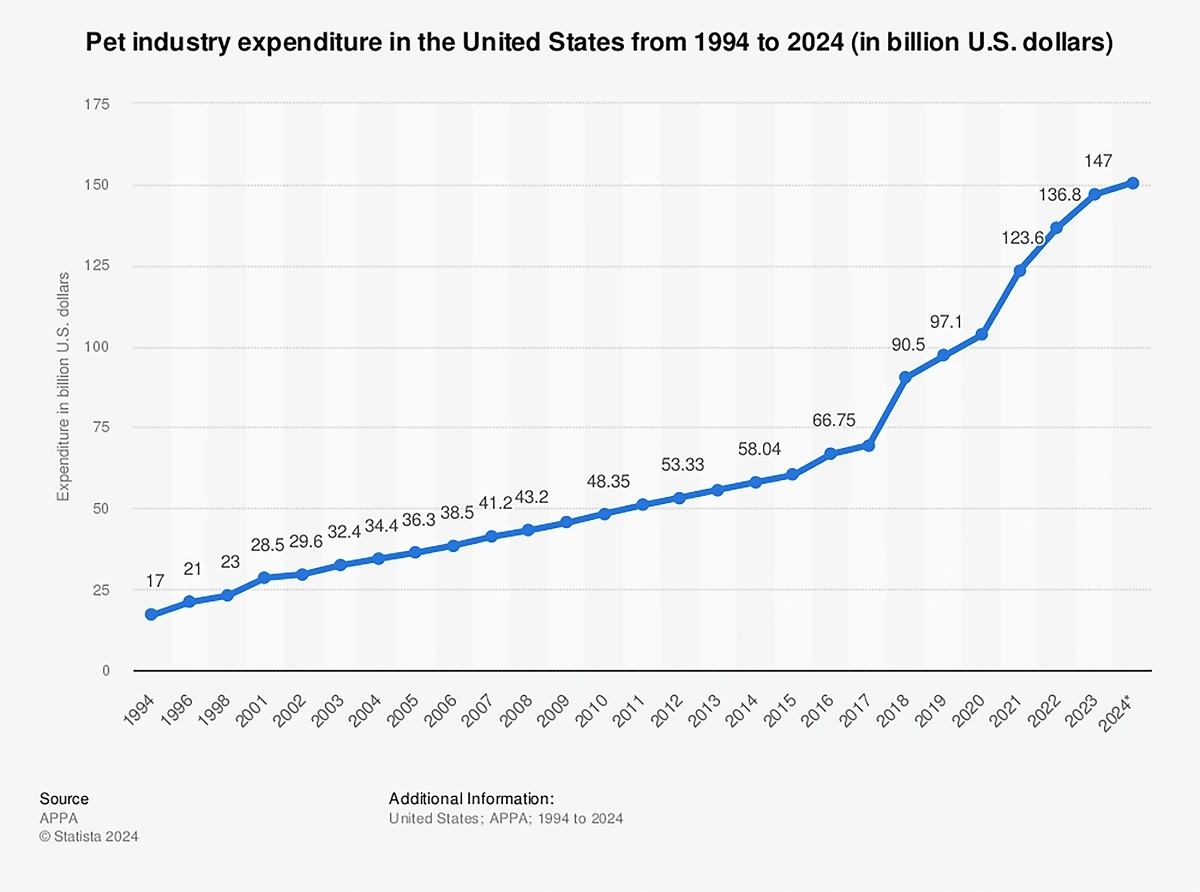
The expenditure on pets keeps growing year by year, with 147 billion USD spent on pets in 2025 alone.
Pet owners are willing to spend any amount for the sake of their pets, which will be advantageous for businesses as they start introducing luxury products for pets.
11. 81% of retailers are planning to expand to multiple channels to sell their products in the next 12 months.
This is because most shoppers do not stick to one channel and keep searching for their ideal products in different channels for better offers or delivery options.
12. 86% of customers are willing to pay more for a superior customer experience that highlights the value of customers.
Loyal customers not only make repeat purchases but also act as advocates for your brand.
In the next few years, businesses will have better personalised services for their current customers and the newer ones as well.
Consumers are also embracing secondhand purchases, leading to the expansion of the resale market.
This trend is particularly notable within the luxury sector, where more brands are entering the market to connect with sustainability-minded consumers.
The Health, Wellness, and Sustainable Products Boom
13. The estimated spending on wellness products and services in the United States has exceeded $450 billion, which is growing at an annual rate of over 5 per cent.
Consumer trends are prioritising wellness and seeking products and services that cater to their personal well-being.
With that being said, the rise in wellness products in businesses which are both affordable and of good quality will be seen as the reason for success.
14. Approximately 37% of surveyed consumers indicated a desire for more products and services in both the sleep and mindfulness categories.
This era has brought anxiety and sleeping disorders to many, and focusing on those issues can benefit businesses as well.
In the future, quiz-based services will increase in order to help consumers out.
15. The global wellness industry has seen a remarkable growth of $3.4 trillion in 2023, which is projected to reach $8.5 trillion by 2027, which is a significant increase of 57%.
This means that the wellness and self-care industry will also grow, with multiple businesses opting for this line and new products for multiple skin types.
Evaluation of skin type will be done online using cameras, etc.
16. The global anti-aging market was valued at approximately 62 billion U.S. dollars in 2021 and is projected to grow to around 93 billion by 2027.
More and more people want to know how they can get products that are free from toxic chemicals, fragrances, and other additives which are also animal cruelty-free.
Retailers will be providing more specific information on the ingredients, quality, test reports, etc., for the peace of consumers’ minds.
Generational Differences in Consumer Behavior
Generation gaps play an important role in consumer behaviour towards retail, their strategies, and services.
Different generations require unique experiences, values, and influences.
Here are the ways how each generation approaches a purchase:
Gen Z: Tech-savvy, Socially Conscious, and Value-Driven
17. Almost 50% of GenZ make a purchase only when they need something.
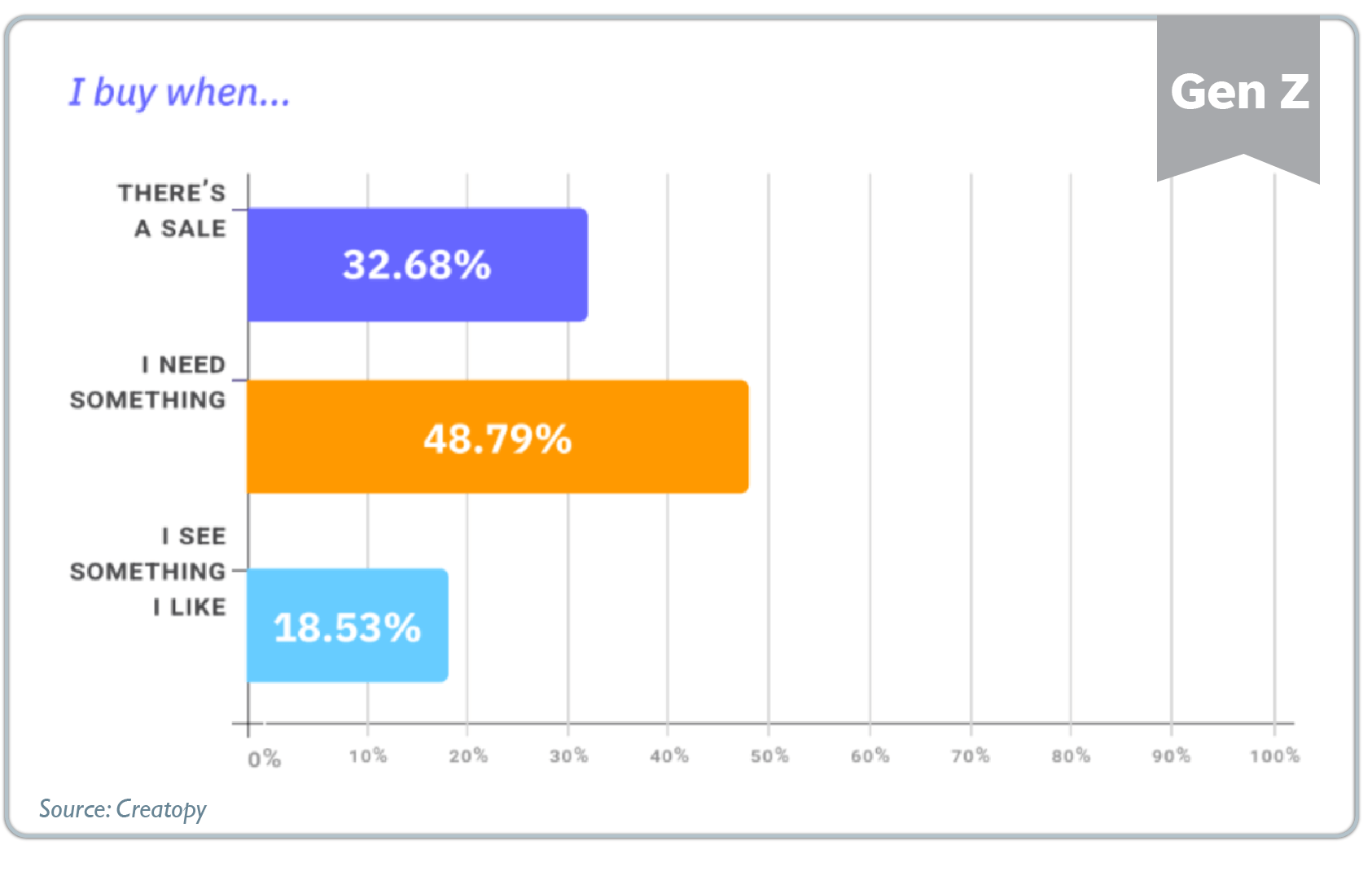
However, 32.68% look for good deals or sales while making online purchases.
18. GenZ users research instantly on the spot for offline purchases
47% of GenZ in the US use their smartphones to research items they want to purchase while standing in an offline store.
It is reported that 63% say that it is difficult to live without smartphones.
It makes life easier since consumers can compare prices and look for coupons or discounts online, saving a lot.
19. In a 2023 survey, 48% of Gen Z participants said that they primarily shop at discount stores.
Gen Z’s luxury spending is very low, with only 9% saying that they shop at luxury retailers.
20. A 2022 survey found that Gen Z, the younger consumers, spends approximately $157.07 per month on entertainment, out of which the majority is spent on streaming services, music, and gaming.
You can also see Gen Z Eating Trends. With health and social awareness as guiding values, Gen Z has embraced plant-based diets, sustainable sourcing, and mindful eating practices, influencing a surge in demand for eco-friendly, ethical food products.
Millennials: Experience-Oriented and Digitally Native
21. 31% of millennials believe that a brand needs to have at least a 3-star rating for them to feel comfortable making a purchase.
22. Majority of millennials overspend during holidays
Millennial shopping statistics from 2020 show that 86% of millennials overspend on holiday gifts.
Moreover, over one-fifth of those who overspent during the holidays bought over $500 worth of gifts.
While this tendency to overspend can be beneficial for businesses, it often leads consumers to debt once the holiday season is over.
23. Statistics on millennial online shopping habits show that 48% of millennials prefer shopping online over in-store.
Build trust & FOMO
Highlight real-time activities like reviews, sales & sign-ups.
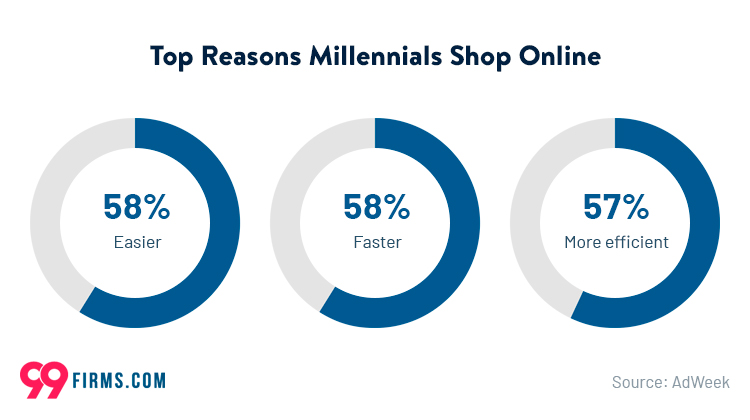
This is because 58% find it easier, 58% find it faster, and 57% find it more efficient.
24. Around 78% of millennials choose to use their money on creating memories through experiences and events rather than purchasing any material.
Gen X: Practical and Financially Savvy
25. 64% of GenX consumers have purchased from email
Email is the most popular online purchase channel among Gen X consumers, attracting 64% of consumers.
This rate is higher than SMS, banner ads, social media posts, and social media ads.
With the right technology, marketers can effectively use email to deliver unique experiences that strengthen customer-brand relationships.
26. 72% of GenX consumers tend to research businesses on the internet after seeing an ad or commercial.

27. 54% of GenX consumers feel overlooked and neglected by brands, expressing their frustration that their needs are constantly being disregarded.

28. For GenX online shoppers, high-quality products are the top factor motivating them to promote a brand, and 48% of GenX consumers state this as their primary reason.
Build trust & FOMO
Highlight real-time activities like reviews, sales & sign-ups.
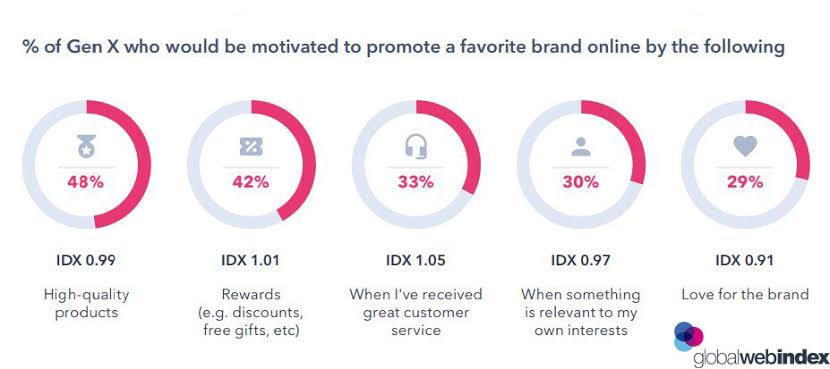
Baby Boomers: Brand Loyal and Seeking Convenience
29. Astonishingly, 61% of baby boomers prefer to use self-checkout lanes while buying groceries, compared to only 51% who still prefer to contact a human.
30. 63% of baby boomers purchase wild bird food and treats
Baby Boomers are the largest purchasers of the wild bird food and treats market, accounting for 63% of total spending in the category, with an average annual expenditure of $88 per person.
Although only a small percentage of 3% of Boomers actually own a pet bird.
31. 96% of baby boomers use search engines, 95% use email, and 92% prefer shopping for products and services online instead of in stores and shopping malls.
Baby boomers have a significant amount of money that they are willing to spend with the correct information.
32. In the US, more than 70% of the country’s disposable income comes from baby boomers.
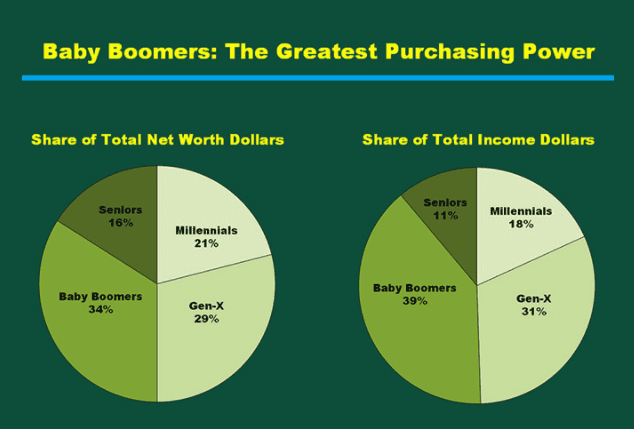
The Impact of the Pandemic on Consumer Behavior
The COVID-19 pandemic has significantly modified consumer behaviour. After this, people have started making changes in purchasing habits, priorities, and brand interactions.
Here’s a look at some of the key ways the pandemic has influenced consumer behaviour trends:
Build trust & FOMO
Highlight real-time activities like reviews, sales & sign-ups.
The Rise of Online Shopping and Home Delivery
33. The COVID-19 Pandemic brought major changes in online restaurant delivery
The online restaurant delivery sector experienced a significant rise in market share post-pandemic.
The prediction was 13%, but it was originally forecasted to be 9% before the pandemic.
This trend is expected to continue, with the market share of online restaurant delivery expected to be up to 21% in 2025.
34. According to an Edison Report from April 2020 to 2021, the annual food delivery transactions grew the most in countries like the UK, Canada, the US and Australia, with the UK being the highest with 171%.
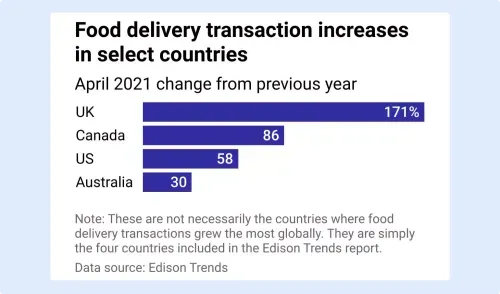
35. During the pandemic, online grocery shopping increased to 200% , and household cleaning supplies sales rose to 15%.
36. The U.S. Census Bureau reported that e-commerce sales reached $792 billion in 2020, accounting for 14% of total retail sales.
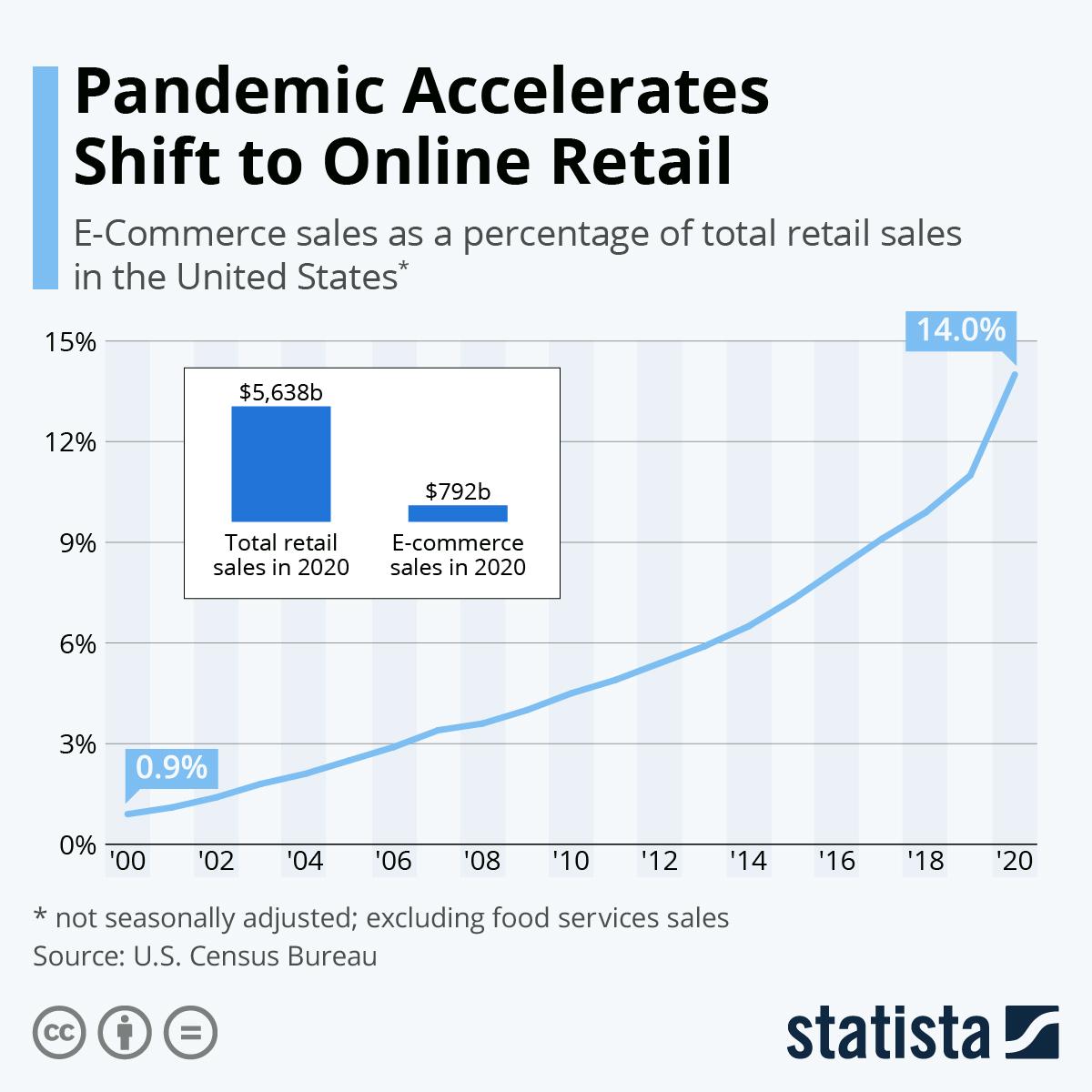
Increased Focus on Health and Hygiene
37. During the COVID-19 pandemic, over 96% of respondents reported washing their hands 6 to 12 times per day, with most washing them 8 times daily.
38. Overall, about 50% of U.S. consumers now consider wellness a top priority in their daily lives, up from 42% in 2020 due to the aftereffects of COVID-19.
India witnessed a significant rise in sales of hand sanitisers in 2020, with a remarkable 144% growth compared to the previous year.
39. The liquid hand wash sales also increased by 42%. This sudden and substantial rise was due to the COVID-19 pandemic, which increased awareness and concern for health and hygiene.
40. The amount of people with access to basic hygiene services has seen improvement, rising from 43% in 2015 to 48% in 2020, indicating progress towards enhanced health and well-being due to the COVID-19 Pandemic.
The Impact of Economic Factors on Consumer Behavior
Consumer behaviour is significantly influenced by economic factors. It is responsible for how, when, and where people spend their money.
Here are the factors that impact customer decisions:
Income Levels
With higher income levels or extra money, people like to spend it on fun things like treats, trips and other indulgences.
But when money is tight, they prioritise buying only what they need, like food and basics, which helps them stay financially safe.
Employment Rates
With high employment rates, people have confidence and spend more since they feel safe with their current situation.
But when many people lose their jobs, they become more careful and start saving their money and spending less.
Inflation
With rising prices, people’s money has started to go low.
This makes consumers search for deals and products with lower prices or just wait to buy later If the prices keep rising, people change their spending habits.
They focus on getting good products at affordable prices.
Interest Rates
When interest rates are low, it’s cheaper to borrow money.
This encourages people to spend and take out loans to make significant purchases like houses and cars.
But when interest rates are high, borrowing becomes expensive, and people are less likely to spend. Instead, they focus on paying off their debts.
Economic Stability
In a stable economy, people feel confident and spend money consistently.
But when the economy is uncertain, like during a recession or other financial crisis, people get cautious and save more.
They also spend less to protect themselves from financial risk.
Wrap Up
Understanding these latest consumer behaviour trends will keep you and your business ahead in this changing economy.
To keep up with the market, you will have to accept the shift towards personalisation, technology, and sustainability.
Moreover, by doing this, you can earn customer loyalty and trust of your customers and thus build a strong connection with them.









